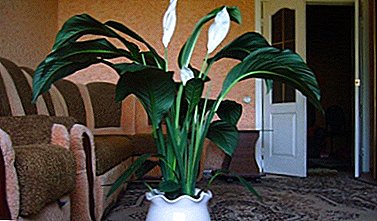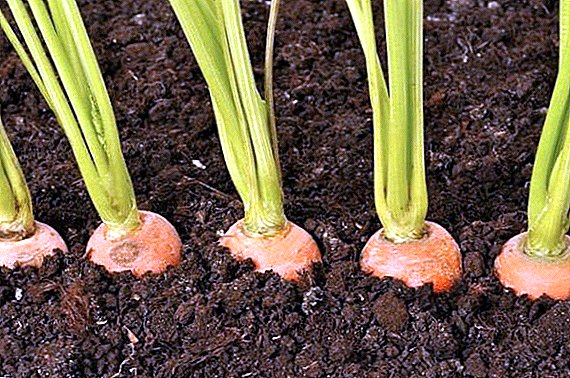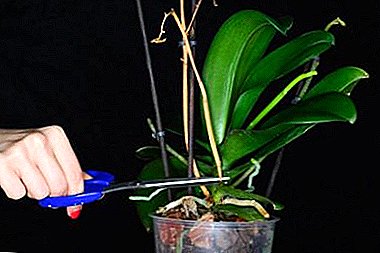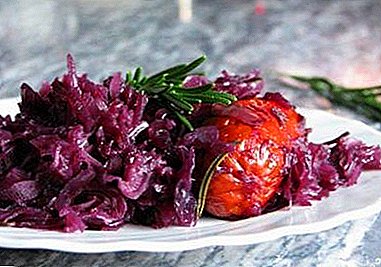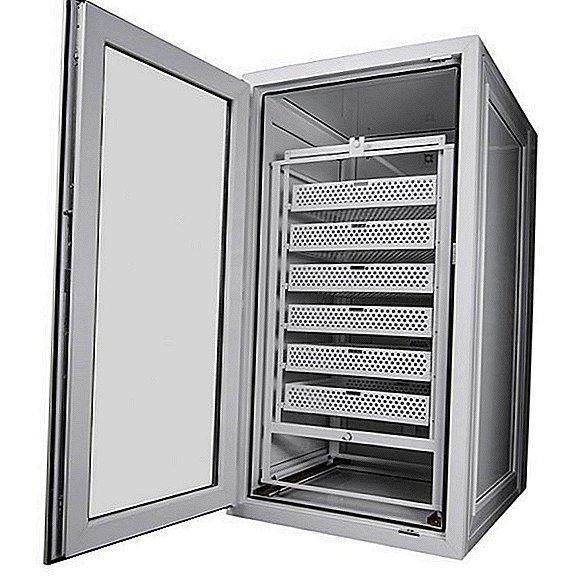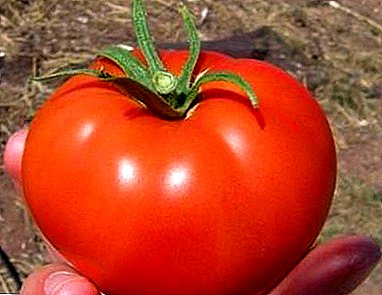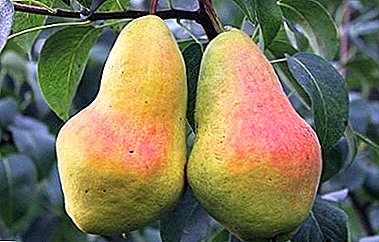
This plant bears the name of the harsh God of Thunder from the ancient Slavic pagan pantheon. Perhaps this is a tribute to the author of pear pearl the ancient Slavic mythology.
But in any case, the name of the fruit crop, which will be discussed, is very congruent with the severity of the region in which it is grown. And this region is Siberia, and that says it all.
It is in its rather difficult and unsuitable climatic conditions (at least in relation to heat-loving pears, by definition) grade "Perun" It shows itself very well and productively, further in the article the description of agrotechnics, photos of fruits and gardeners reviews.
What kind of pears refers?
 This fruit is a pear. late autumn type. To ripen its fruits start from mid-October. The process of the final ripening of the fruit continues for some time and ends with the onset of the first frost.
This fruit is a pear. late autumn type. To ripen its fruits start from mid-October. The process of the final ripening of the fruit continues for some time and ends with the onset of the first frost.
When stored in the refrigeration chamber pear varieties "Perun" do not lose their external and taste conditions until January.
Here we must bear in mind that the overexposure of autumn pears on a tree is fraught with the fact that the fruits lose some of their advantages. Many experienced gardeners remove them for 8-10 days before final maturity. After lying down after removal for several days, they become more succulent than pears that have come down on the tree.
Bere Bosk, Uralochka, Silent Don, Svetlyanka and Samara beauty also belong to the autumn varieties.
There is one more, “mechanical”, reason why practically ripe fruits should be removed several days before their final maturity.
As a rule, by the end of the ripening cycle, the pears of Perun become fairly heavy in weight. Such fruits happen windy very easy to crumble, without typing their inherent good taste.
At the same time, this pear culture belongs to self-infertile fruit plants. Belonging to this category suggests that the tree unable to actively self-pollinate its own pollen.
In order to guarantee the individuals of "Perun" normal fertilization and acceptable yields, near it is necessary to plant two or three pear pollinators, blooming at the same time. They will provide the tree with additional cross-pollination.
Breeding history and breeding regions
 Pear varieties Perun was bred in the experimental gardens of the All-Russian Research Institute of Horticulture in Siberia. M.A. Lisavenko (Barnaul) a team of breeders in the I. Puchkin (group leader), E. Karataeva, I. Kalinina, M. Borisenko.
Pear varieties Perun was bred in the experimental gardens of the All-Russian Research Institute of Horticulture in Siberia. M.A. Lisavenko (Barnaul) a team of breeders in the I. Puchkin (group leader), E. Karataeva, I. Kalinina, M. Borisenko.
When creating a novelty, a pear of selected hybrid variety No. 10821 was used (the parent couple is "Granddaughter" and "Bergamot"), which is crossed with a grade "Winter Deanka".
This crop is in the group of varieties so called Altai selection. Together with Perun, this list includes Svarog, Lel, Kupava and some other types of pears, which were developed specifically for the harsh climatic conditions of Siberian horticultural farms.
As a result, the described pear turned out to be more resistant to cold than varieties for the central regions of Russia, and no worse than the quality of the collected products.
By the way, the Slavic fabulous mythological names of many of them have nothing to do with the antiquity of the genes of these plants. At that time, the head of the collective of authors was very fond of the history and religion of the ancient Slavs, and therefore Puchkin's reverent attitude to the history of Russia, its ancient tales and legends was transferred to the pears that they created.
 It is worth noting that attempts to regionalize a variety in the northern Siberian regions (in particular, in the Novosibirsk, Tomsk and Kemerovo regions) were not crowned with success.
It is worth noting that attempts to regionalize a variety in the northern Siberian regions (in particular, in the Novosibirsk, Tomsk and Kemerovo regions) were not crowned with success.
Due to the structural features of the branches, the external description and photo of which is later in the article, the pear variety Perun is practically unable to bear fruit in such harsh natural climatic zones.
Frost-resistant varieties are Forest Beauty, Chudesnitsa, Yakovlevskaya, Otradnenskaya and Fairy Tale.
Description of the Perun variety
The variety has the following specific external and structural features:
Tree. Standard growth - medium, in some cases with particularly favorable environment and development may be above average. The trunk is covered with bark of a greenish-gray shade.
Crown, branches. The "Perun" tree is distinguished by a rather sprawling crown, which has an outwardly attractive shape, close to a spherical one. Array of branches is not very dense, thickening is estimated as medium.
Shoots. Have an arcuate contour. The predominant color of the shoots is brownish gray. Fruit formations are tied mainly on kolchatka simple and complex types.
Leaves. In mid-sized leaves, as a rule, a wide egg-shaped silhouette prevails. Standard sheet plate has a slight concavity. The surface of the plate is smooth to the touch. Solid and almost flat edges of the leaves are almost devoid of any serrations. The leaves are painted in dark shades of green.
Inflorescences Flowering pear "Perun" begins at a fairly late date.
Fruit. In a crop taken from an adult tree, fruits of medium and above average sizes prevail (in particularly favorable years). At the same time, the average pear from such a tree weighs between 140-170 g, although there are more weighty fruits.
 A prominent feature of this variety, immediately apparent, is the asymmetry of its unequal fruits, the surface of which is very often marked by a slight tuberosity.
A prominent feature of this variety, immediately apparent, is the asymmetry of its unequal fruits, the surface of which is very often marked by a slight tuberosity.
Not very dense, white, slightly oily, with a fine grain, the pulp has a pronounced pleasant aroma.
The flesh, characterized by some dryness with a small amount of juice, is covered by a delicate, slightly oily, shiny skin.
The color of the fruit before removing it from the tree is green, after ripening the skin acquires a golden-yellow color.
On the skin in large numbers green subcutaneous spots are clearly distinguishable. Inside the fruit in small seed chambers of the closed type are small, narrow seeds.
Pears are kept on the branch by means of short curved stalks.
A photo








Specifications
This type of garden pear refers to the universal fruit varieties. This means that its fruits are good at very different uses - fresh, dried, and also as a raw material for the production of various, tasty and healthy stewed fruit, jam, jelly, marmalades, desserts.
 By the time of consumer maturity, the fetus acquires a fairly pleasant sweet-sour taste of dessert character.
By the time of consumer maturity, the fetus acquires a fairly pleasant sweet-sour taste of dessert character.
Some disadvantage of "Perun" is the feeling while eating stabbing grit that occurs due to lack of juiciness.
Chemicals in ripe pears are contained in this proportion:
| Composition | amount |
|---|---|
| Sahara | 12,8% |
| Titrated acids | 0,45% |
| Vitamin C | 5.8 mg / 100 g |
| Tannins | 58 mg / 100 g |
| P-active compounds | 58 mg / 100 g |
Fruit tree of the specified grade starts 4-5 years after planting.
An adult tree produces regular yields, which are characterized by moderate volumes.
In particular, in gardening farms of Altai - the homeland of "Perun" - average yields per tree reach 18 kg.
In the conditions of Siberia pear Perun demonstrates satisfactory winter hardiness, although it is inferior to the old Siberian "Lukashovka" varieties by the specified parameter.
Meanwhile in case especially severe winters wood can freeze slightly. Therefore, when breeding varieties "Perun" it is recommended to pay special attention to the prevailing climatic conditions in the place of the planned planting.
In these regions, pear varieties are successfully grown: Tonkovetka, Sverdlovchanka, Severyanka, Feeriya and Severyanka red-cheeked.
Planting and care
 Despite the fact that "Perun" was bred for cultivation mainly in Siberian regions, from this it does not cease to be a relatively heat-loving plant. For this reason planting seedlings must be made in a well-protected place.
Despite the fact that "Perun" was bred for cultivation mainly in Siberian regions, from this it does not cease to be a relatively heat-loving plant. For this reason planting seedlings must be made in a well-protected place.
There should not be strong drafts and groundwater close to the surface of the earth. And most importantly - in this place there should be a lot of sunlight.
Dense and steady shadow will contribute to the demise of the underdeveloped small branches and will not allow to harvest good harvests from the tree.
As for the suitable composition of the soil at the planting site, the most chernozems, loams or sandy loams are desirable. On sandy and clay bases, pear cultivation is possible when forming a good planting pit, low acidity and regular (every year) soil fertilizer.
Under planting seedling digging pit depth of about 1 m and a diameter of 70-80 cm. Until the moment of landing, the pit should stand within 1-2 weeks.
Pre it should pour the lime solution (2 glasses of fluff per 10 liters of water). The soil extracted during digging is mixed with humus, sand and superphosphate.
With this soil mixture, the roots of a seedling are poured during planting. With this his root neck should go 5-7 cm out of the ground.
Around the tree thus planted with 3-4 cm radial earthen shaft forms a near-trunk circle with a radius of 35-40 cm.
Into the funnel formed Pour 2-3 buckets of separated water. After absorbing moisture, watering place Sprinkle with dry humus mulch (2-3 cm).
 Proper pear care suggests regular watering of wood (as a representative of the Siberian varieties, "Perun" requires additional irrigation in early summer), proper soil fertilization, as well as competent pruning.
Proper pear care suggests regular watering of wood (as a representative of the Siberian varieties, "Perun" requires additional irrigation in early summer), proper soil fertilization, as well as competent pruning.
The first pruning must be done on the seedlingthat will give the future crown the correct form and ensure its normal development.
Besides, mature trees require spring pruning to remove dead and overgrown branches.
Diseases and pests
Pear "Perun" traditionally very good against major fungal diseases.
Disease-resistant varieties of pears: Chudesnitsa, Chizhovskaya, Skorospelka from Michurinsk, Moscow early and Oryol beauty.
According to the observations of gardeners, this culture almost never gets sick. This variety is resistant to many pests.
However, if there is a desire to further protect the plant from rodents and sunburn, shtamb and skeletal branches are encouraged to wrap any materials at hand. From insects will help well lime mortar, which is treated with a tree trunk.
From insects will help well lime mortar, which is treated with a tree trunk.
With careful and responsible implementation of all these essentially simple rules, you can count on the pear to thank its owner with an excellent harvest.




